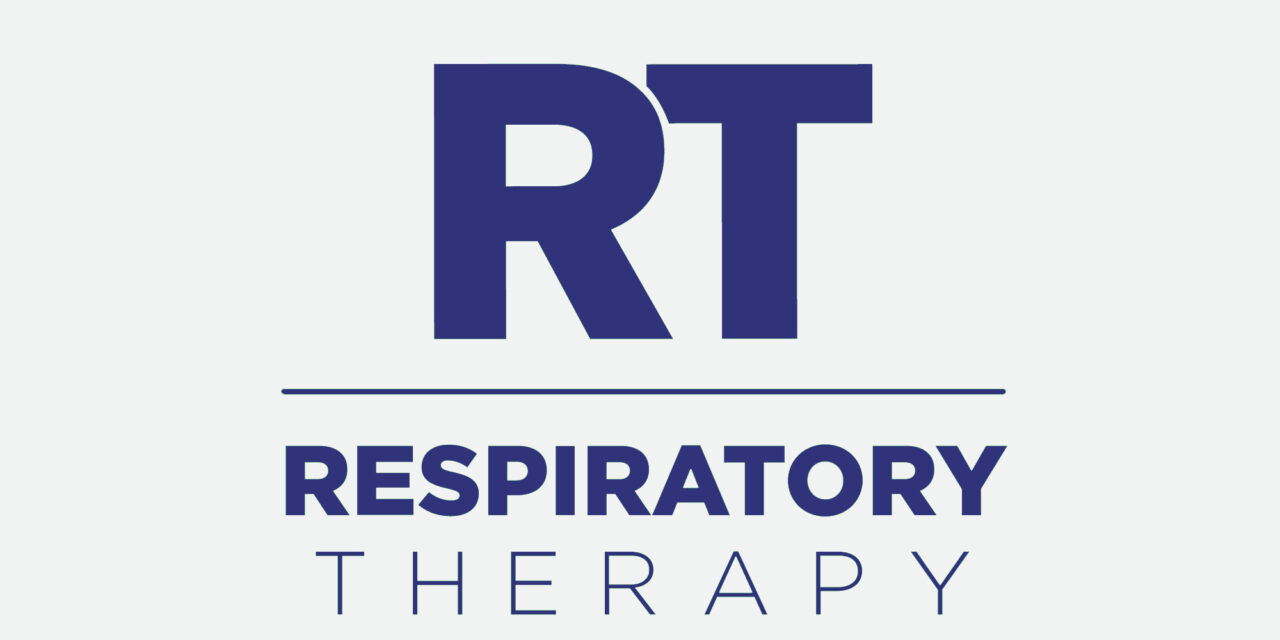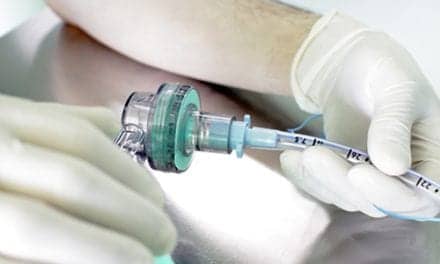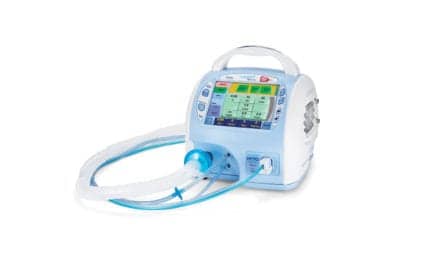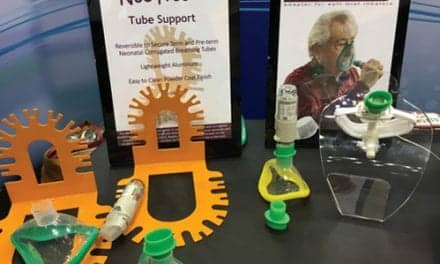RT talks to humidification device manufacturers Teleflex, Vapotherm, and Hydrate Inc about the challenges they are facing.
By Tor Valenza
In light of the economy, this month’s Market Analysis Q&A asked executives from three humidification device manufacturers about how their companies are addressing rising healthcare costs during these challenging times, as well as developing more affordable, easier to use technology.
Our respondents include Jeri Eiserman, RRT, director of clinical support, Teleflex Medical, Durham, NC; Tom Miller, PhD, MEd, clinical research and education for Stevensville, Md-based Vapotherm Inc; and Norm Tiffin, BSc, RRT, MSA, vice president for Hydrate Inc, Midlothian, Va.
RT: Humidification technology has come a long way over the years beyond simply heating and humidifying the airflow. In general, what would you say are the most important basic features that any modern humidification device should have today, particularly for high flow ventilators?
Eiserman: Heated humidifiers should be tested to and comply with the [various] standards: UL 60601-1, Medical Electrical Equipment, Part 1, [etc]. … These are the general requirements; now let’s review recommended product features:
- Compatibility with Ventilators: Heated humidifiers must deliver optimal humidification to the patient and manage circuit condensation in a manner that does not affect ventilator performance. The humidifier and circuit must be designed to avoid depositing an excessive amount of moisture into the ventilator, leading to interference with performance and possible ventilator shutdown.
- Adjustable Airway Temperature: Recognizing that 37ºC is not the optimal temperature for all situations, the ideal heated humidifier would allow for customization of the airway temperature, enabling the therapist to adjust the humidifier based on unique patient, ventilatory, and/or environmental condition.
- Temperature Gradient Control: Excessive circuit condensation or “rainout” can be the biggest nuisance for the clinician. A temperature gradient feature, working in conjunction with the adjustable airway temperature, allows the clinician to control the amount of rainout within the circuit.
- Intuitive User Interface: A heated humidifier should feature a user interface that is intuitive and easy to learn, which will minimize training and facilitate ease of use.
- Universal Design: The use of heat and humidity continues to expand into other applications as witnessed by the growing use of high-flow nasal cannula therapy. The ideal heated humidifier would accommodate a variety of applications, flow rates, and patient types. A universal design is not only cost-effective, but maximizes clinician efficiency and minimizes training time.
Miller: Absolute humidity (water vapor content in mg/L) has been demonstrated to be the most important variable with respect to airway cell function. In this regard, evidence suggests that optimal absolute humidity to preserve mucosal cell function is 100% saturated at body temperature (44 mg/L). To achieve optimal absolute humidity, we must have 1) the ability to saturate the gas with vapor phase water, and 2) the ability to have precise control of temperature.
The latter point is often overlooked, but because saturate gas holds a variable amount of water vapor, we must control temperature to control absolute humidity. In this regard, the practice of humidification is multifactorial and includes a number of basic features. First, a humidification system should condition gas to ~100% relative humidity and any prescribed flow. Second, a system should have more than a rough estimate of temperature, but rather a precise measure of gas temperature. Third, and perhaps most important, a system should have the ability to deliver the conditioned gas to the patient at the same saturation point and temperature that were created. If the gas can cool in the circuit, it counteracts the conditioning effort with respect to loss of temperature, water content, and energy state (remember, it takes a substantial energy expenditure effort from the nasopharyngeal tissues to vaporize water that has condensed).
Tiffin: First, I would challenge your presumption that heated humidification has come a “long way.” As we did 30 years ago, we still humidify with passing gas by a water/gas interface with no control over humidity. As we raise heat, we may raise humidity and vice versa. Whether this is an old cascade humidifier with the heating coil in the water or newer generation humidifiers that heat a pot, wick, or membrane, it remains the same technology, which offers no control of known humidity. That said, the most basic features of any heated humidifier can be found by looking no further than the name implies: heat and humidity. Heat has been the standard by which all humidifiers are measured by the clinician and, I daresay, manufacturers. If it is near 37°C, then the assumption has always been the humidity is good. Wrong again. Recent findings are debunking this myth and showing that temperature is not predictive of humidity.1 Nevertheless, current heated humidifiers can at least effectively deliver gas at 37°C. Or can they? High sample tracing of the temperature profile of a ventilator breath using heated wire circuit with any heated humidifier reveals the gas temperature as highly volatile during the duty cycle—by as much as 7°. Given that the sampling may be at a low rate and the display averages temperature over several minutes, the actual temperature of delivered gas can be virtually anything but the displayed number.
RT: Healthcare facilities struggle with having the best and latest technology for their patients, yet also are being constrained by tighter budgets. Give us your insights about device obsolescence, excessive maintenance after the warranty period, and when to consider replacing older technology with new devices.
Eiserman: Health care facilities rely on manufacturers to not only provide the latest in technology, but to adequately support that equipment throughout their partnership. As such, when choosing a vendor for heated humidifiers, it is important to understand the total cost associated with the equipment. In order to help facilities offset the cost associated with acquiring humidification technology, leading manufacturers, such as Teleflex Medical, provide facilities a no-charge use program. These programs provide facilities with access to the latest in equipment, with no capital expense.
If you decide to purchase the equipment outright, it is imperative to know the standard warranty period along with the cost associated with repair or replacement after that warranty has expired. Also, ask questions to understand the track record of the manufacturer and the equipment they are providing. For example, how long have they been providing equipment, what are the repair capabilities, and what is their track record for obsolescing equipment? In addition, evaluate what accessories such as temperature probes or heated-wire pigtails are required, and examine the cost of these accessories on an annual basis.
Miller: Device obsolescence and maintenance costs are real concerns for health care facilities, but they do not compare to the substantial clinical and financial returns that can come from deploying the latest technology. Manufacturers must strive to create devices with minimal maintenance requirements through excellence in engineering and materials selection. By the same token, facilities should challenge manufacturers to provide meaningful return-on-investment analysis that demonstrates why replacing existing equipment is reasonable and necessary.
RT: Healthcare costs continue to place a burden on hospitals, insurers, and patients. How is your company trying to address reducing healthcare costs in your products?
Tiffin: There are at least two ways to reduce cost of treatment: one, reduce the cost of technology acquisition, and two, improve outcomes so variables such as length of stay, ICU days, or ventilator days are reduced. The Hydrate OMNI can do both. Hydrate OMNI is so named because it covers the spectrum of humidifier needs with only one device. Currently, devices used for ventilators do a poor job for high flow gas (nasal cannula) applications, and those humidifiers purposed for high flow gas can’t easily be adapted for ventilators. The Hydrate OMNI was designed to cover both of these applications—and more. Therefore, capital costs are reduced; capital inventory is lower, and less training is required. … [Also], the OMNI doesn’t need special water tubes, heated circuits, or temperature probes. Oxygen tubing and 22 ml tubing are all that is needed.
Second, the Hydrate OMNI has been identified as providing reduced length of stay in the ICU using high flow gas application to keep patients off the ventilator and during mechanical ventilation to reduce ventilator days. Although it is early in the clinical outcome evaluation of this new humidifier and these are case study reports, they point with clarity toward validated future savings across these and other applications.
Eiserman: At Teleflex Medical, we are focused on providing our customers cost-savings through unique product design, effective education programs, and affordable capital equipment programs. [In terms of product design,] the ConchaTherm Neptune is a universal humidification system that can be used with invasive ventilation, noninvasive ventilation, oxygen hoods, infant CPAP, heated aerosol therapy, and high-flow nasal cannula therapy. This universal design eliminates the need to change out equipment as treatment advances, minimizing staff training and reducing inventory requirements for both equipment and disposables. . . . [Because it is] compatible with both heated-wire and conventional circuits, the ConchaTherm Neptune allows the facility to use the circuit type that best meets their clinical and economic goals. In addition, our proprietary heated-wire circuit design is validated for safe operation up to 21 days. This design supports the AARC Clinical Guidelines, which recommend minimizing breaking the ventilator circuit, while at the same time offering a cost benefit.
Miller: Vapotherm’s products are not comparable to other heater/humidifiers on the markets with respect to the nature of humidification and specificity of temperature control. In this regard, we believe that our High Flow Therapy is playing an instrumental role in reducing respiratory care cost by eliminating the need for more invasive and costly therapies. Nonetheless, we are making efforts to reduce costs specific to our products as seen in the recent release of our Precision Flow units. These devices integrate multiple components of conventional systems such as oxygen blenders and flow meters into one unit, plus they utilize a fully disposable water path, which saves time and resources for the respiratory therapists. Overall, the per patient price of disposables also has been significantly lowered through engineering and production economies of scale.
RT: As humidification technology becomes more sophisticated, it also becomes more complicated. How are you designing your humidification products to be more user-friendly?
Miller: Our products are designed with user ease-of-use in mind. The vapor transfer cartridge technology that creates vapor saturation and precise temperature outcomes at up to 40 lpm requires nothing more than for you to turn it on and set the temperature dial to whatever you want. The jacketed tube system protects the energy state of the gas to within +/-0.5°C between the cartridge and the patient, thus eliminating the guesswork of heating water and cooling the gas. With our technology, there is no more guesswork as to what temperature and absolute humidity the delivered gas has become.
Tiffin: The Hydrate OMNI requires the clinician to simply and easily adjust temperature and humidity. No hidden buttons, no confusing lights, icons, and multiple combinations. Up and down buttons adjust the set temperature up and down; [similarly], up and down buttons adjust the set humidity up and down. The display shows the absolute or relative humidity and the temperature. The OMNI will even let the clinician know when the reservoir bag is low, can be set up and heated to 37°C in less than 3 minutes, [and] turns heat and humidity off instantly. [It also] automatically turns itself on after an aerosol treatment is complete and is up to 37°C in seconds.
Eiserman: Designed in collaboration with the respiratory therapy community, the unique components of the ConchaTherm Neptune system work together to deliver optimal humidification, while at the same time maximizing clinician efficiency. The Neptune can be preprogrammed with parameters chosen by the department that best meet the needs of their patients. Upon start-up, Neptune will automatically load these settings and respond accordingly, facilitating a quick and easy setup. A universal user interface features graphic icons that are intuitive and easy to learn, minimizing training and facilitating ease of use. [In addition], Neptune’s alarm package is designed to maximize patient safety and minimize nuisance alarms. A control panel clearly and intuitively displays the source of alarms to facilitate trouble-shooting.
RT: Humidification technology seems to be mature, yet manufacturers continue to improve it every year. What future humidification technology trends can RTs expect to see in the next few years?
Tiffin: The trend that will be most important in critical care is that of really knowing and understanding humidification at the bedside: what is delivered; what is optimal; what is measurable. … In subacute care, there is exciting research being performed at Johns Hopkins that has indicated [that] high-flow gas therapy by nasal cannula may replace CPAP therapy for OSA.2 If this is the case, then an explosion of market demand for heated humidity at home will follow. The same high-flow therapy is also used for pulmonary rehab patients and showing great promise, but the current mobility restriction is a huge problem. (How much extension cord can you carry?) We believe the Hydrate OMNI holds great promise for this application because of its high energy efficiency (more than 90%), small size, and ease of use.
Eiserman: Manufacturers must continue to focus on products that help customers maximize caregiver efficiency, reduce the human and financial toll of hospital-acquired infections, increase patient safety, and provide less invasive medical procedures. Our development in the humidification space will focus on these fundamentals.
Miller: On the contrary, humidification technology is just now reaching the point where we can achieve the goal of getting body temperature pressure saturated (BTPS) gas to a patient’s airway. Accurate temperature is as critical as relative humidity to providing the appropriate absolute humidity to a patient. Furthermore, many will argue that the physiologic impact of energy state of the water carried by the gas stream (true vapor versus water droplets) is just starting to be understood. Other areas where RTs should look for high-performance humidification technology to improve respiratory care include ventilation, home care applications, and drug delivery.
RT
Tor Valenza is a staff writer for RT. For further information, contact [email protected].
References
- Lellouche F, Taille S, Maggiore SM, et al. Influence of ambient and ventilator output on performance of heated-wire humidifiers. Am J Respir Crit Care Med. 2004;170:1073–9.
- McGinley BM, Patil SP, Kirdness JP, Smith PL, Schwartz AR, Schneider H. A nasal cannula can be used to treat obstructive sleep apnea. Am J Respir Crit Care Med. 2007;176:194–200.










